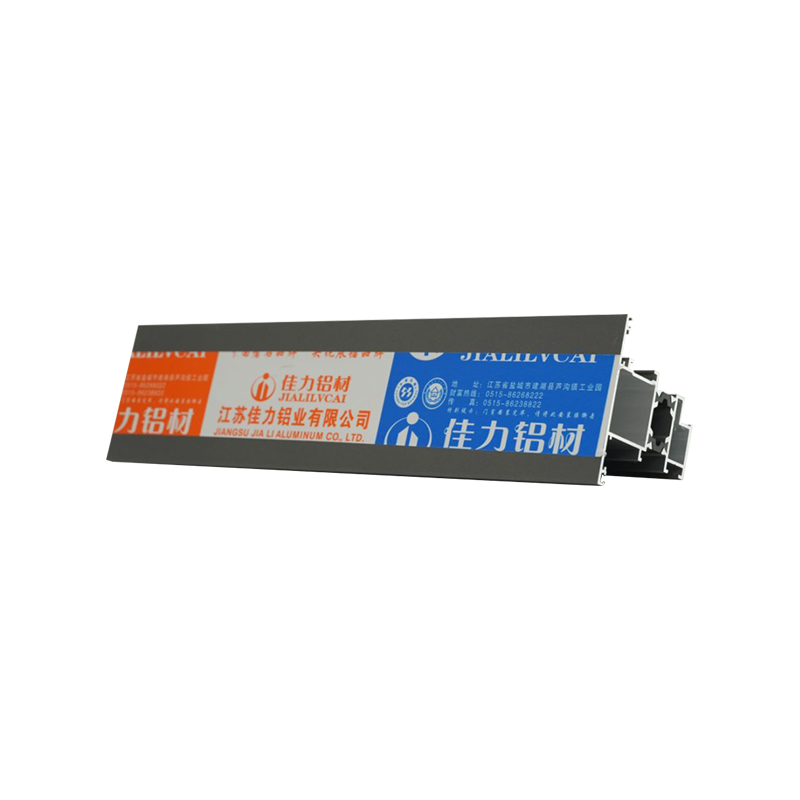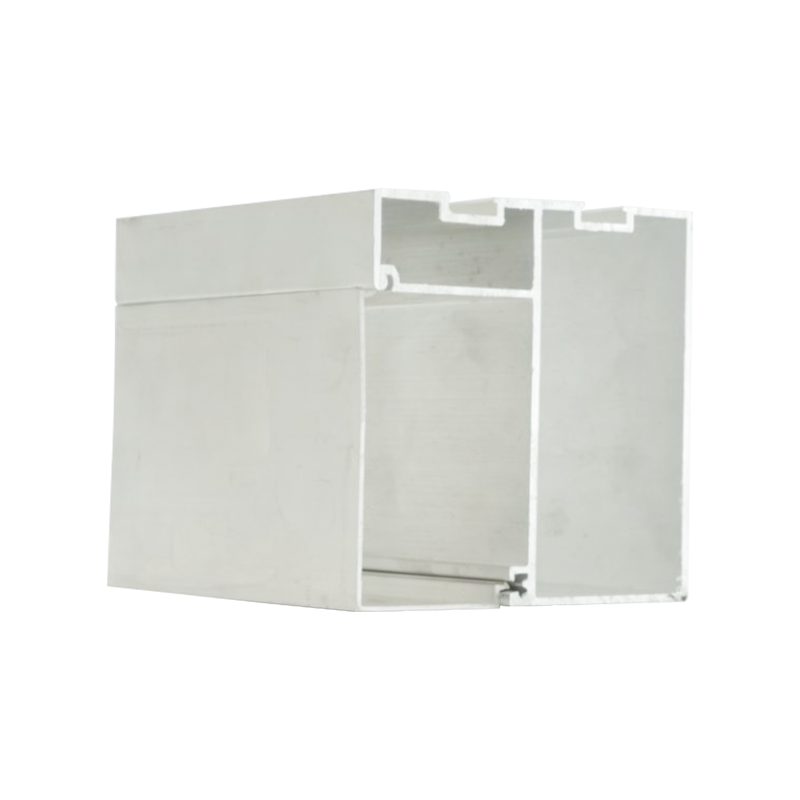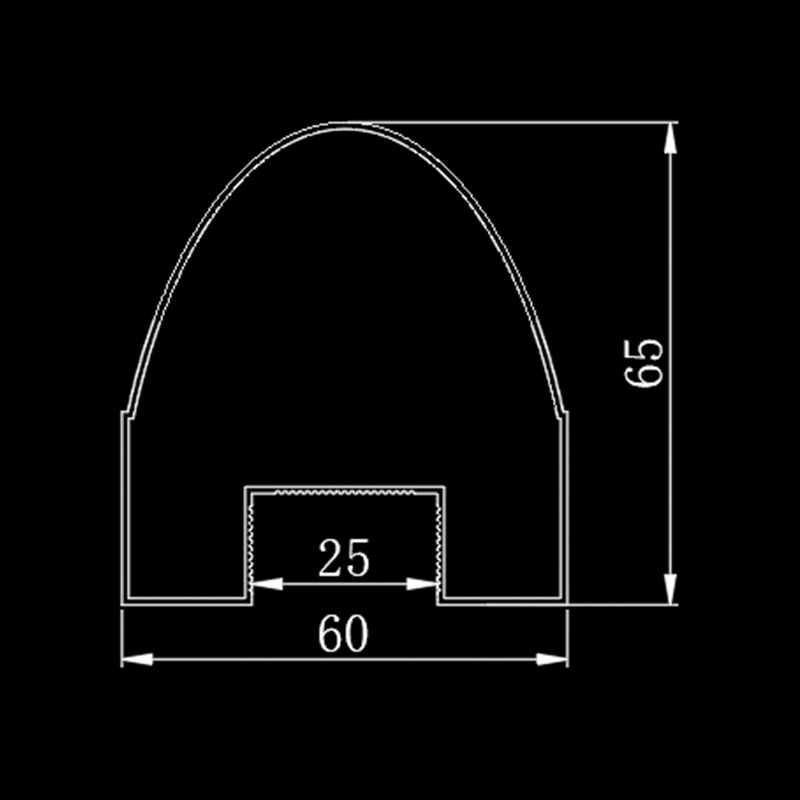The core breakthrough of the 120 series profiles lies in the coordinated optimization of their cross-sectional parameters and mechanical properties. In the typical cross-sectional design, the width or height of the profile is set to a 120mm benchmark value, and the seven-cavity eight-reinforcement rib broken bridge structure is used to achieve the ultimate material distribution in a limited space. This design not only improves the bending stiffness of the profile, but also reduces the thermal conductivity coefficient to the industry-leading level through the embedding of the broken bridge insulation strip.
Load-bearing capacity is a significant advantage of this profile. Its larger cross-sectional size combined with the wall thickness of 2.0mm to 3.0mm enables the profile to perform well when subjected to wind pressure and deadweight. Especially in high-rise buildings, this design can effectively resist strong wind impact and ensure the long-term stability of the curtain wall system. For example, the conversion frame adopts a "face-to-rib" structure instead of the traditional "rib-to-rib" structure, which expands the load-bearing coverage by 30% and increases the load-bearing stability of the glass fan in the conversion frame by 40%.
The structural detail design also reflects the depth of technology. The glass sash adopts a double-corner fixing system to replace the common single-corner reinforcement solution, which increases the load-bearing capacity by 50%. The solid design is used at the connection of the thermal insulation strip to achieve a leap in thermal insulation performance in the 3.0mm wall thickness profile. These design innovations enable the profile to meet structural safety while also having aesthetic expression.
The performance advantage of the 120 series profiles comes from the deep integration of materials and processes. High-quality aluminum alloy is used as the base material, and the surface hardness reaches HV120 or above through heat treatment process. With the surface treatment technology such as powder spraying and fluorocarbon spraying, a corrosion-resistant and anti-aging protective layer is formed. This combination of materials enables the profile to maintain long-term stability in harsh environments such as coastal areas.
The breakthrough in thermal insulation performance is particularly critical. The solid connection design of the broken bridge thermal insulation strip, combined with the combined application of Niat thermal insulation strips and isothermal rubber strips, reduces the heat transfer coefficient of the profile to below 1.8W/(m²·K). This thermal insulation performance not only meets the green building standards, but also further improves the sealing and thermal insulation effect of the system through the design of details such as the glue-free glue strips on the outside of the glass.
The impact resistance is enhanced through the coordination of material toughness and structural design. The ductility of the aluminum alloy substrate and the reasonable layout of the reinforcement ribs enable the profile to effectively disperse stress when subjected to external force impact. This design is particularly important in the application of hidden frame curtain walls, ensuring that the connection nodes between glass and profiles remain stable under extreme conditions.
In the field of high-rise buildings, the 120 series aluminum alloy curtain wall profiles have become an ideal choice for glass curtain walls due to their load-bearing capacity and stability. Especially in occasions where large wind pressure and self-weight need to be withstood, the cross-sectional advantages of the profiles can be fully utilized. For example, in a super high-rise building project, by adopting this profile, the curtain wall system successfully withstood the test of a level 12 typhoon while maintaining excellent visual permeability.
In the application of hidden frame curtain walls, the detailed design of the profiles shows unique advantages. The fully hidden curtain wall system achieves seamless connection between glass and aluminum fan frame through glue strip sealing technology. This design not only improves the overall aesthetics of the curtain wall, but also creates a comfortable environment for the interior by optimizing the airtight and watertight performance. For example, the MQ120 curtain wall system uses a rubber strip sealing design to make the three physical performance indicators reach the Class A superior standard for high-performance sliding aluminum alloy doors and windows.
The application of the exposed frame curtain wall highlights the structural aesthetics of the profile. The visual presentation of the broken bridge structure and the exquisite processing of the aluminum frame grid make the curtain wall facade present an atmospheric and modern architectural temperament. The glass inlay technology of the exposed frame glass curtain wall, combined with the fine processing of the aluminum frame, makes the building facade form a unique light and shadow effect in the sun. This design not only meets the functional needs, but also gives the building a dynamic beauty through the interaction of materials and light and shadow.

 ENG
ENG
 English
English русский
русский 中文简体
中文简体 Español
Español bahasa Indonesia
bahasa Indonesia






